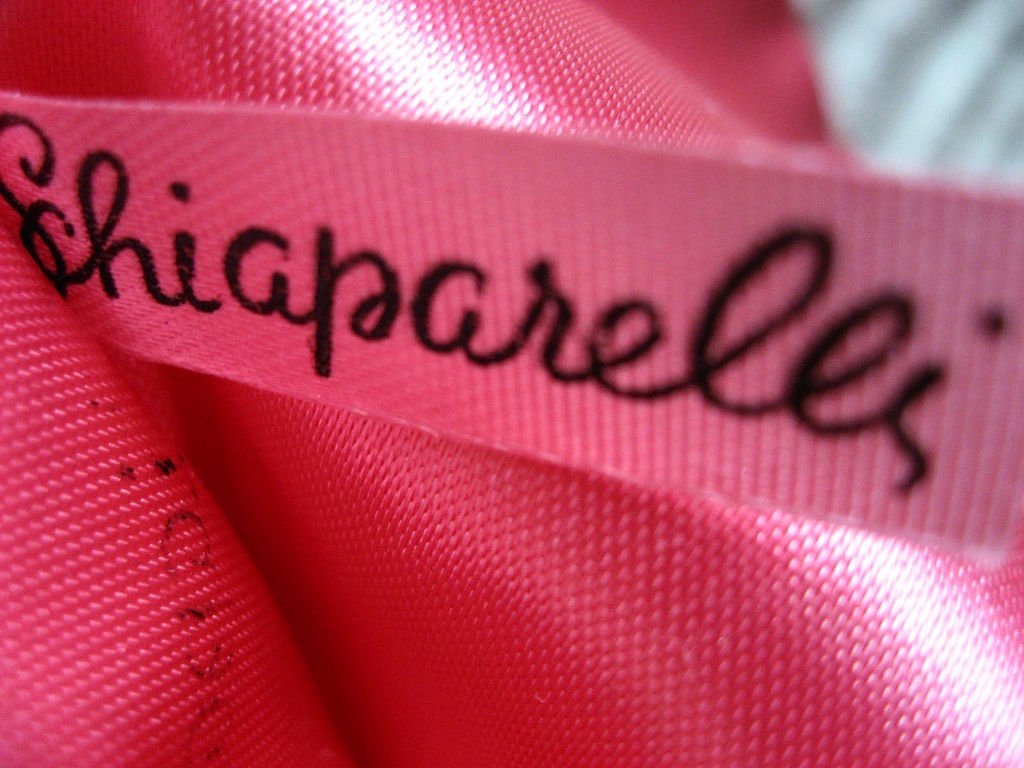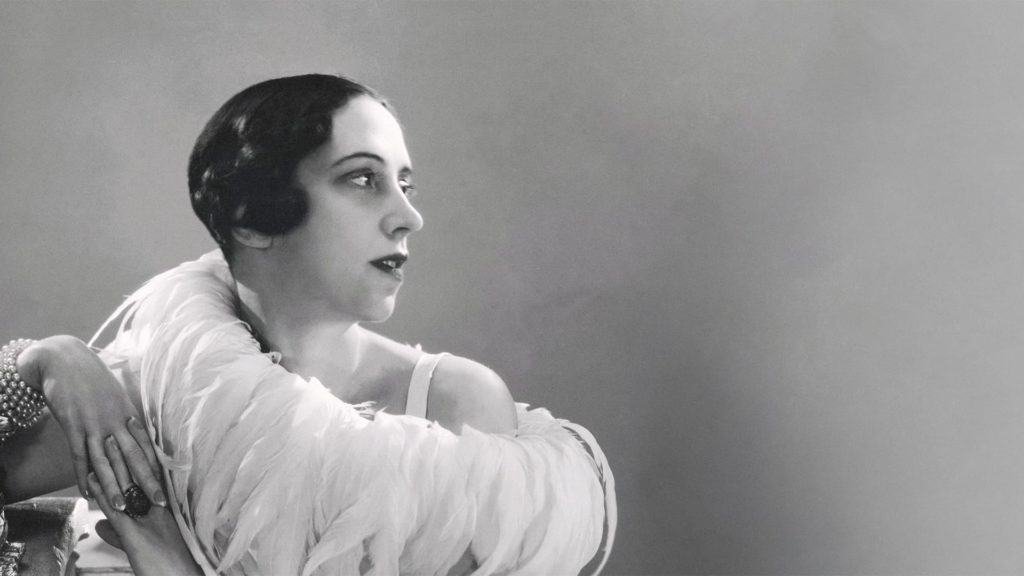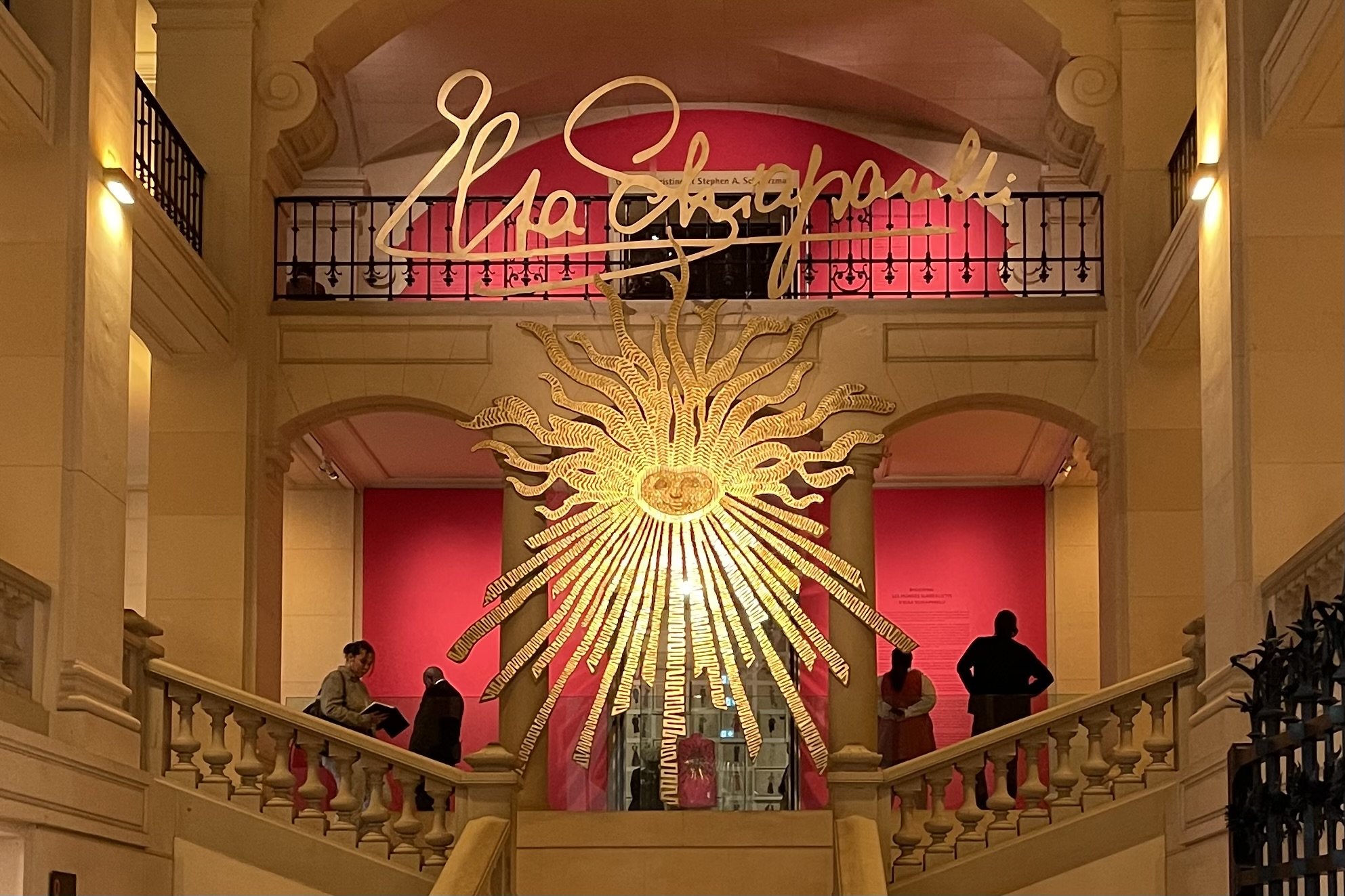Schiaparelli Then and Now
There’s a famous quip attributed to couturier Elsa Schiaparelli, that in difficult times, fashion is always outrageous.
Elsa Schiaparelli photographed by George Hoyningen-Huené 1932, for Vogue.
Gaining prominence in the years between the first and second world wars, against the backdrop of the rise of fascism in Europe, no one could dispute that Schiaparelli (Schiap as she was affectionately known) was designing clothing for women in supremely difficult times. But oh, how the times, and the posse of outrageous artists with whom she collaborated, inspired her. As a result, she influenced more than fashion.
Her own personal difficulties - an aristocratic family that never understood her, a husband who abandoned her and their young daughter - only deepened her resolve. Like her rival Coco Chanel, Schiaparelli never found a rule she wouldn’t break or a reason she couldn’t rewrite fashion history.
The grand entrance to the Shocking exhibit at MAD.
On view through January 2023, "Shocking ! The surreal worlds of Elsa Schiaparelli (Les mondes surréalistes d’Elsa Schiaparelli)” at the Musée des Arts Décoratifs (MAD) Paris, presents over 500 works of couture, costumes, jewelry, accessories, paintings, sculptures, perfume bottles and photographs, in the context of Surrealism then and now.
It’s a wild ride through Schiaparelli’s oeuvre, full of unexpected pairings and diverse talents. It opened in July ‘22 to coincide with Paris Haute Couture Week, firmly establishing the founder’s influence on the internet-breaking work being produced by Schiaparelli’s current artistic director Daniel Roseberry.
Of all the qualities that characterized the designer, collaboration is the most celebrated here. The work of the painters, photographers, embroiderers, poets, filmmakers and jewelers with whom she partnered are on view alongside the haute couture.
An early Schiaparelli jacket embroidered with a drawing by Jean Cocteau.
Born in Italy, Schiap made her way to Paris where she was introduced to members of the avant-garde. In her they found a visionary who dared to adorn women’s bodies with the playful, irreverent markers of Surrealism. Man Ray, Jean Cocteau, Meret Oppenheim, Salvador Dali – they all adored her, and in turn she made the most groundbreaking European artists of the day her co-conspirators.
Schiaparelli delighted the world with her visually destabilizing designs: the bow sweater, the skeleton dress, torn flesh fabric, fingernail gloves, insect jewels, bullet case buttons, snuff cologne. With Salvador Dali, she brought us the high heeled shoe hat and the Lobster Dress. Her pieces are rare and collectible; Standard Oil heiress Milicent Rogers donated 200 Schiaparelli pieces to the Brooklyn Museum, including a belt with a music box in the buckle from 1939. Oh and that hot pink you see everywhere? That’s Schiaparelli’s too.
Shocking pink, a Schiaparelli trademark, as worn by Zsa Zsa Gabor.
Schiaparelli designed collections thematically, and the exhibition’s Curator Nathalie Crinière arranged the show according to those themes, so that pieces from the 20’s, 30’s and 40’s are in conversation with contemporary pieces of the same subject. She chose themes from things she loved with significance in surrealist art, from insects (butterflies were surrealists’ symbol for metamorphosis and death) to the circus to the zodiac, and always ripe for embellishment and color - especially the shocking pink which became her signature.
“I gave to pink the nerve of the red, a neon pink, an unreal pink.”
Early on, a friend introduced Schiap to renowned couturier Paul Pioret, who taught her dressmaking skills and encouraged her to take risks. Her early experiment with trompe l’oeil was a surprise hit which put her on the map. Her bow sweater had just enough practicality to make it accessible to the mass market and enough sense of humor to gain admiration from the high society crowd. By the end of the 1930’s Schiaparelli was dressing the most glamorous women in the world, including Hollywood stars like Greta Garbo, Mae West, Katherine Hepburn and Zsa Zsa Gabor.
The trompe l’oeil sweaters became instant icons:
Schiaparelli is famous for many “firsts,” including being one of the first fashion designers to collaborate with artists, (her first collaboration was with the Russian-French writer Elsa Triolet on the “aspirin necklace”), a practice which has become almost too commonplace today. She loved music and was one of the first to use it in her runway shows. She experimented with new fabrics, inventing the first see through raincoat and the first jumpsuit. She created the concept of the “capsule collection,” anticipating women’s increasing independent travel, and she famously put her atelier in the upstairs of her shop at 21 place Vendôme.
But it was her association with the surrealists which defined her. Like artists in the era’s other burgeoning movements - cubism, impressionism, the Harlem Renaissance – the surrealists were responding to the horrors of the post war world and the brutalist, intolerant authoritarianism which took root in the scorched earth of Italy, Spain, Germany and Japan. Surrealists rejected bourgeoise attitudes, classical art rules and conventional ways of thinking. Seeking answers in Dadaism and Sigmund Freud, they found meaning in dreams and the unconscious, and positioned themselves as rebels in modern identity politics.
Teeth, insects, shells and seaweed adorn the fabric of 1930’s designs:
Schiaparelli’s most famous collaborator was of course Salvador Dali, a partner who brought her enormous acclaim and, ultimately, intense scrutiny. Founder André Breton expelled Dali from the movement in 1939 for being a Nazi sympathizer. Dali told the journalist André Parinaud, “I often dreamed of Hitler as a woman. His flesh, which I had imagined whiter than white, ravished me... There was no reason for me to stop telling one and all that to me Hitler embodied the perfect image of the great masochist who would unleash a world war solely for the pleasure of losing and burying himself beneath the rubble of an empire; the gratuitous action par excellence that should indeed have warranted the admiration of the Surrealists.”
In addition to shock value, sexuality energized Dali’s work. Hitler dreams aside, it was core to his creativity and thus became part of Schiap’s. When Edward VIII, heir to England’s King George V, abdicated the throne to marry American divorcee Wallace Simpson, European high society all but rejected them. (It’s reported that the royal chaplain who agreed to perform the wedding service was so ostracized afterwards that he was forced to leave the country). Of course Schiaparelli and Dali were happy to work with the couple, designing a dress for Simpson’s engagement that she wore to be photographed by Cecil Beaton for Vogue.
The dress was a sensation and has become a fashion legend, copied by brands through the years and redesigned over and over by Schiaparelli. The Lobster Dress, which featured Dali’s painting of a cooked red lobster (one of his favorite sexual symbols) with its tail fanned out, emerged from between the wearer’s legs, claws opening toward the ankles. This dress allowed the disgraced royal couple to say everything they wanted to say to society without having to say it.
Wallace Simpson photographed in the Lobster Dress by Cecil Beaton in 1937 for Vogue.
In difficult times, reality is not firm or stable. It bends and melts and becomes cryptic and unrecognizable.
In 2022, the world is again experiencing post traumatic stress. Existential threats are stacking up as we fight different kinds of wars on different fronts.
Reflecting on her reasons for choosing a surrealist theme (“Milk of Dreams” from Leonora Carrington) for the 2022 Venice Biennale, curator Cecilia Alemani said, “The pressure of technology, the heightening of social tensions, the outbreak of the pandemic, and the looming threat of environmental disaster remind us every day that as mortal bodies, we are neither invincible nor self-sufficient, but rather part of a symbiotic web of interdependencies that bind us to each other, to other species, and to the planet as a whole.”
And former Secretary of State Madeline Albright wrote in her 2018 book Fascism: A Warning, “We should be awake to the assault on democratic values that has gathered strength in many countries abroad and is dividing America at home.”
In our own difficult times surrealism is alive and well and the fashion is indeed outrageous. Schiaparelli continues to inspire fashion houses to design for brave modern women, and cultural theorists to include fashion as a key element of identity politics.
Contemporary designs by artistic director Daniel Roseberry:
It’s a lot harder to make a sartorial splash today than it was in 1937. Culture influencers turn to Schiaparelli, under Daniel Roseberry, to electrify the metaverse. Just this week Kylie Jenner made headlines at the Schiaparelli Paris show in a velvet dress with a plunging neckline and choker necklace featuring an oversized anatomical heart. Lady Gaga wore Schiaparelli to sing the national anthem at President Biden’s inauguration. Beyonce wore the label to receive a Grammy.
“A true artist is not one who is inspired, but one who inspires.”
You cannot walk down the street of a major city without being confronted by shocking pink. Valentino’s Creative Director Pierpaolo Piccioli devoted the majority of his Fall/Winter 2022-2023 ready to wear collection to a custom version of the color.
When Elsa Schiaparelli designed her first pieces, the 19th Amendment had just passed, giving women in the U.S. the right to vote. Though the same right wouldn’t be granted to French women until the 40s, feminism was taking root in various ways and women were dressing for it.
Now women are using the canvas of their bodies to reject the growing judicial and cultural backlash exemplified most recently by the Supreme Court’s reversal of Roe v. Wade. Loud, sexy, surreal and outrageous, Schiaparelli’s contemporary designs again dress the most powerful women in the world, this time making it clear: my body is my own, my choices are my own, I do not cede control to you.
SHOCKING ! LES MONDES SURRÉALISTES D’ELSA SCHIAPARELLI is on view from July 6, 2022 to January 22, 2023 at Musée des Arts Décoratifs in Paris.



























